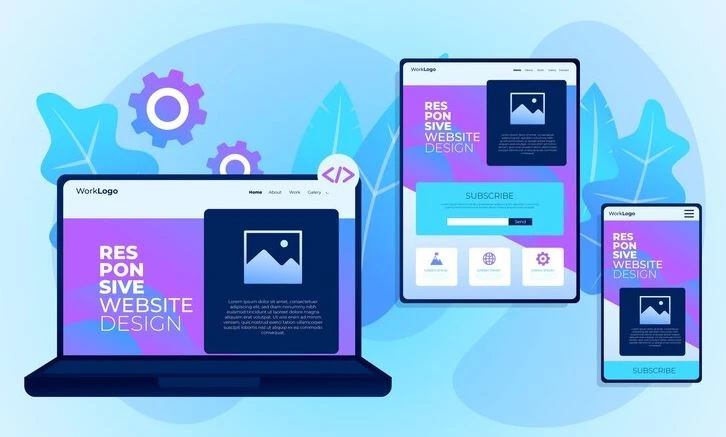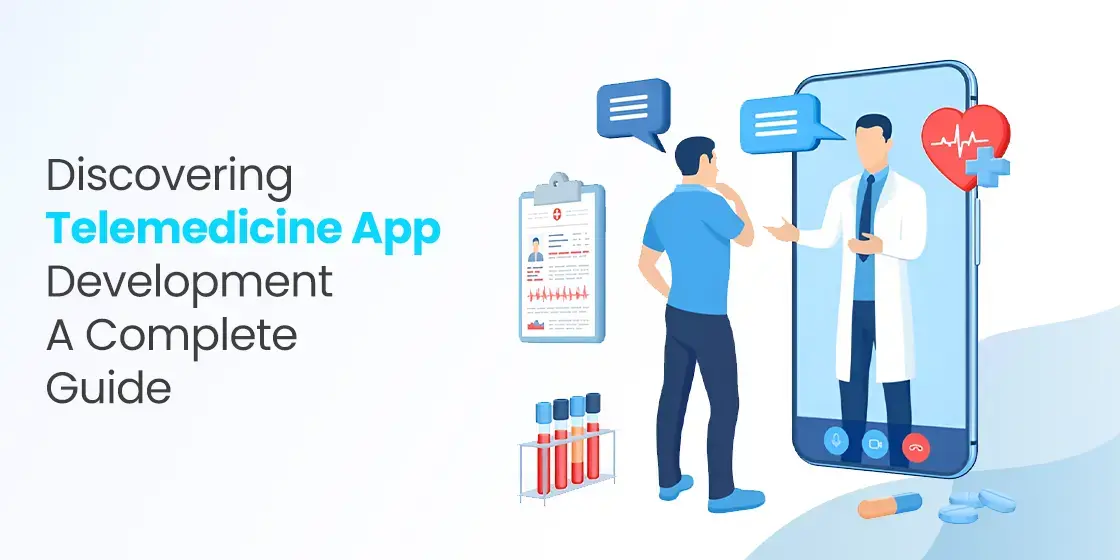Table of Content
Learning the Core Concept of Web App Development in Detail
Having an advanced web application has become important for every organization. It provides them a way to facilitate customers digitally. This is why many businesses want to know how to create a web app that can enhance their digital interaction with the customers. If they do not have any technical resource, it is best advised to them to take professional web app development services. It is a preferred way to get solutions from a reputable agency that understands the method and procedure of creating all types of business web apps.
However, if any company is not comfortable in taking the outsourcing model, they will then need to create the project by themselves. This is one of those areas where many companies struggle, as most of their resources are non-technical. They do not know about the process that should be followed for web app development or any other software solution. That is where they need to know how to create a web app by following some important rules. These points not only help them to create a web app, but all types of software products that are connected to an online business.
In this blog, we will discuss in detail how to create a web app professionally. It will be a good read for the beginners who do not know much about app development. Let’s start from the basics understanding why businesses need a web application to facilitate their growing pool of customers.
Importance of Web Application for Businesses

Web applications play a pivotal role in modern businesses, offering a myriad of benefits that contribute to their success and growth. Firstly, web applications provide accessibility, allowing businesses to reach a global audience irrespective of geographical boundaries. Unlike traditional software, web applications can be accessed through web browsers on various devices, enabling customers and employees to interact with the business anytime, anywhere. This accessibility enhances customer engagement, improves user experience, and fosters brand loyalty, ultimately driving business growth and expansion.
Secondly, web applications offer scalability and flexibility, crucial aspects for businesses operating in dynamic environments. With web applications, businesses can easily scale their operations to accommodate growing user bases and evolving needs. Whether it’s handling increased traffic during peak periods or integrating new features and functionalities, web applications provide the agility necessary for businesses to adapt and thrive in competitive markets. Moreover, cloud-based web applications offer added scalability by allowing businesses to leverage cloud resources and infrastructure, reducing operational costs and enhancing performance.
Furthermore, web applications streamline business processes and improve operational efficiency. By automating repetitive tasks, managing data effectively, and facilitating real-time collaboration among employees, web applications enable businesses to optimize productivity and minimize errors. Additionally, web applications often integrate with other systems and platforms, providing seamless workflows and enhancing communication across departments. This integration not only enhances internal operations but also improves customer service by ensuring timely responses to inquiries and requests.
Types of Web Applications You Need to Know

Before starting developing a web app, you need to know which one suits best for your business. There are various types of web applications used by the businesses, and as a project stakeholder, you need to have a good knowledge about them. Here are some of the key types of web apps you could develop for your business.
Static Web Applications
Static web applications represent the fundamental form of web development, predominantly constructed using HTML and CSS. Primarily utilized for crafting portfolios or digital brochures, these websites offer basic functionalities where content remains static unless manually modified by the developer. Despite their simplicity, static web applications serve as effective online platforms for showcasing information, products, or services to an audience. These sites are used primarily by startups and small businesses, as it fits well in their budget.
Developing and hosting static web applications is relatively straightforward compared to more complex web solutions, as they do not necessitate intricate server-side processing. This simplicity makes them an ideal and cost-efficient option, particularly for individuals or small businesses seeking a straightforward online presence. The absence of dynamic content updates simplifies the maintenance process, reducing the need for ongoing technical support and lowering operational costs. However, the inherent simplicity of static web applications also implies certain limitations in terms of functionality and interactivity.
While static web applications offer an accessible entry point into web development, their static nature restricts dynamic interactions and personalized experiences for users. Unlike dynamic web applications, which can adapt content based on user input or database queries, static websites rely on manual updates to incorporate changes. Consequently, businesses with evolving content requirements or a need for interactive features may find static web applications insufficient for their purposes.
Dynamic Web Applications
Dynamic websites represent a sophisticated approach to web development, offering interactive and personalized experiences for users. Unlike static websites that present fixed content, dynamic websites leverage server-side processing and databases to generate content dynamically in response to user interactions or data inputs. This dynamic nature enables websites to adapt content in real-time, providing users with personalized recommendations, customized responses to queries, and interactive features such as user-generated content and online transactions.
At the heart of dynamic websites lies server-side scripting languages such as PHP, Python, or Ruby, which enable the server to generate HTML pages dynamically based on predefined rules and database queries. These scripting languages facilitate the retrieval, manipulation, and presentation of data from databases, allowing websites to deliver dynamic content tailored to individual user preferences or contextual information. Additionally, dynamic websites often incorporate client-side scripting languages such as JavaScript to enhance interactivity and responsiveness, enabling features like form validation, animations, and asynchronous communication with the server.
Dynamic websites offer numerous advantages over static counterparts, including enhanced user engagement, scalability, and flexibility. By providing personalized content and interactive features, dynamic websites foster deeper user engagement and increase the likelihood of return visits. Moreover, the ability to scale dynamically in response to changing user demands or business requirements makes dynamic websites well-suited for large-scale applications and e-commerce platforms. Furthermore, dynamic websites facilitate content management through the use of content management systems (CMS), empowering website owners to update and manage content efficiently.
Progressive Web Applications (PWAs)
Progressive Web Applications (PWAs) represent a modern approach to web development that combines the best features of traditional web applications with the capabilities of native mobile apps. PWAs leverage web technologies such as HTML, CSS, and JavaScript to deliver fast, reliable, and engaging experiences across various devices and platforms. Unlike traditional web applications, PWAs incorporate progressive enhancements and responsive design principles to ensure optimal performance and usability on both desktop and mobile devices.
One key feature of PWAs is their ability to work offline or with limited network connectivity, thanks to service workers – a type of JavaScript worker that runs separately from the main browser thread. Service workers enable PWAs to cache essential resources and content, allowing users to access previously visited pages and perform certain functions even when offline. This offline capability not only enhances user experience but also ensures uninterrupted access to critical information and functionalities, making PWAs ideal for users in areas with poor network coverage or unreliable internet connections.
Another distinguishing feature of PWAs is their ability to be installed directly onto users’ devices, similar to native mobile apps, without the need to visit an app store. This is made possible through web app manifests, which provide metadata about the application, including its name, icons, and preferred display mode. When users add a PWA to their home screen, it appears and behaves like a native app, complete with an icon for easy access. This installation process eliminates the friction associated with traditional app downloads and updates, improving user engagement and retention.
How to Create a Web App: Key Steps to Follow

Many beginners often face difficulties while creating a web application. This usually happens due to their lack of knowledge and understanding of the app coding. If you are also one of them facing similar type of issues, read the below given points in detail. It is a good read for the beginners who are just starting web app development without having any prior knowledge.
Research the App Market
Before diving into the development of a web application, conducting thorough market research is essential to ensure its success. The first step is to define the target audience. Identify the demographics, preferences, and behaviors of potential users. This can be done through surveys, interviews, and analyzing existing data. Understanding the needs and pain points of your target audience will guide the features and design of your web application, ensuring it resonates with users.
Next, assess the competitive landscape. Research existing web applications that offer similar features or cater to the same audience. Analyze their strengths, weaknesses, and unique selling points. This will help you identify gaps in the market that your web application can fill or areas where you can differentiate yourself. Additionally, studying competitor pricing strategies and customer feedback can inform your own pricing model and product roadmap.
Lastly, gather insights about the latest tech trends in the UAE. Stay updated on industry news, emerging technologies, and shifts in consumer behavior. This knowledge will help you anticipate future demands and innovate your web application accordingly. Additionally, consider conducting keyword research to understand what users are searching for related to your web application. This information can inform your marketing strategy and help improve your visibility in search engine results.
Define App Functionality
To initiate the process, compile a comprehensive list of features meticulously designed to tackle the identified problem statement. However, exercise prudent restraint and refrain from inundating your application with an excessive array of functionalities. Acknowledge that applications with a surplus of features often entail protracted development timelines. Hence, prioritize sensibly and concentrate solely on integrating those features that directly address the pain points prevalent within your target market.
Mindful deliberation should guide your selection process, ensuring that each chosen feature serves a distinct purpose in resolving the identified challenges faced by your target demographic. By meticulously aligning your feature set with the needs and preferences of your intended user base, you can cultivate a more focused and streamlined user experience. This approach not only expedites the development process but also enhances the application’s efficacy in providing tangible solutions to the specific problems encountered by your target audience.
Furthermore, adopting a discerning approach towards feature selection facilitates resource optimization, enabling your development team to allocate their efforts and resources with greater precision. By concentrating your developmental endeavors on a select set of functionalities, you can mitigate the risk of project scope creep and ensure a more efficient utilization of available resources. Ultimately, by adhering to a strategy that emphasizes the integration of features, you pave the way for the creation of a more agile, purpose-driven application.
Build the Application
The web application development process encompasses several stages, each crucial for creating a robust and functional digital solution. After completing the initial phase of planning and conceptualization, you will move towards the actual app development process. This phase can be further broken down into two parts i.e. frontend and backend designing. It is best recommended to utilize specialized resources to develop both of these areas. It not only saves the time, but also ensures to develop frontend and backend of the app efficiently.
The designing of UI/UX of the app is considered paramount, as they dictate how users will interact with the web application. Wireframes and mockups are created to visualize the layout, navigation flow, and design elements. Iterative feedback loops with stakeholders and usability testing help refine the design until it meets user expectations and usability standards. Simultaneously, technical architecture planning takes place to select the web development framework, database structure, and system infrastructure required for the application’s development.
Once the design and prototyping phase is complete, the development stage commences. This involves coding, implementing features, and integrating functionalities based on the finalized designs and technical specifications. Agile development methodologies such as Scrum or Kanban are often employed to facilitate iterative development cycles, allowing for flexibility and adaptability throughout the process. Quality assurance and testing are conducted concurrently to identify and rectify any bugs or issues promptly.
Test and Troubleshoot
Before launching your application to the public, it is imperative to conduct rigorous testing to ensure its functionality and reliability. This testing phase involves putting the application through its paces in a live environment to assess its performance and behavior under real-world conditions. By actively engaging with the application in run mode, developers can verify whether it operates as intended and identify any potential issues or discrepancies that may arise during user interaction.
Should any anomalies or malfunctions be detected during testing, it is essential to promptly diagnose and address these issues to uphold the application’s integrity. Leveraging the capabilities of no-code/low-code platforms can streamline this troubleshooting process significantly. These platforms often offer dedicated debug modes and issue checkers, empowering developers to pinpoint and rectify errors efficiently. By harnessing these tools, developers can expedite the debugging process and ensure a smoother transition to the application’s final deployment.
Choose StruqtIO to Build On-demand Web Applications
StruqtIO is a reputable software development firm renowned for its diverse array of services, which encompass bespoke web app development, ecommerce solutions, web design, and cloud integration services. Since its inception, the company has consistently maintained a prominent presence within the tech sector, garnering acclaim as one of the top web development companies in Dubai.
Driven by a steadfast commitment to delivering digital solutions that yield a substantial return on investment, StruqtIO customizes its offerings to suit the precise needs of each client, regardless of project scale. The company’s unwavering dedication to continuous improvement and refinement empowers it to craft highly adaptable web development solutions, drawing upon the latest industry trends and an in-depth comprehension of the digital landscape.
Frequently Asked Questions
| What is web app development? Web app development is the process of creating dynamic software applications that run on web browsers, leveraging technologies such as HTML, CSS, and JavaScript to provide interactive functionality and user experiences over the internet. |
| How many types of web applications can be built? There are different types of web applications used by the companies. They are divided into multiple categories including static, dynamic and progressive web applications. |
| Which web app development companies are popular in the UAE? Many software development companies in Dubai are gaining popularity day by day. Some of the top names among them includes StruqtIO, Fingent, Zentch, BariTechSol and more others. |
Final Words
That brings us to the end of this blog in which we have discussed how to create a web app by following some important rules. As a beginner, you need to learn all these practices, as they allow you to develop web applications with perfection. These are pretty straightforward steps that could be best used by following a proper documented strategy. Using them, you can build all types of web applications, ranging from ecommerce to enterprise apps and more others.

Empower your digital journey with StruqtIO - Your dedicated partner for cutting-edge custom software development, innovation, and digital transformative solutions. Harness the power of technology to elevate your business and redefine your digital landscape today.


